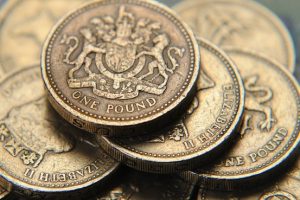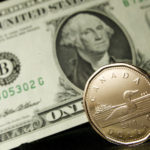 Yesterday’s trade saw GBP/USD within the range of 1.4054-1.4274. The pair closed at 1.4251, rising 0.67% on a daily basis. It has been the 24th gain in the past 53 trading days. The daily low has been the lowest level since March 3rd, when a low of 1.4030 was registered. GBP/USD has expanded gains to 2.41% so far during the current month.
Yesterday’s trade saw GBP/USD within the range of 1.4054-1.4274. The pair closed at 1.4251, rising 0.67% on a daily basis. It has been the 24th gain in the past 53 trading days. The daily low has been the lowest level since March 3rd, when a low of 1.4030 was registered. GBP/USD has expanded gains to 2.41% so far during the current month.
At 7:21 GMT today GBP/USD was inching down 0.03% for the day to trade at 1.4247. The pair touched a daily low at 1.4222 at 6:39 GMT, overshooting the daily S1 level, and a daily high at 1.4291 during the early phase of the Asian trading session.
The sterling gained ground sharply against the greenback on Wednesday, as the Federal Reserve Bank kept the target range for the federal funds rate on hold in line with market expectations. Fed policy makers noted US economic activity has been increasing moderately, but, however, they presented revised down GDP growth and inflation forecasts regarding 2016.
On Thursday GBP/USD trading may be influenced by the following macroeconomic events and reports as listed below.
Fundamentals
United Kingdom
Bank of England Policy Stance
At 12:00 GMT Bank of England is to announce its decision on monetary policy. The benchmark interest rate (repo rate) will probably be left unchanged at the record low level of 0.50%. The rate has been at that level since BoEs policy meeting on March 5th 2009. The repo rate applies to open market operations of the central bank with other banks, building societies, securities firms etc.
At the same time, the pace of BoE’s monetary stimulus will probably be left without change as well, at GBP 375 billion. The asset-purchasing programme, financed by the issuance of central bank reserves was initiated on March 5th 2009, while the scale of this programme was increased by GBP 50 billion to the current GBP 375 billion on July 5th 2012.
The minutes from the Banks policy meeting held in February revealed that all 9 members of the Monetary Policy Committee voted in favor of keeping borrowing costs and the stock of purchased assets intact. One member of the Committee has been voting in favor of a rate hike since the summer of 2015, but abandoned such a stance, as forecasts regarding UK economic growth and consumer inflation were revised down. The annual CPI inflation is projected to remain below 1% until the end of 2016, because of the scale of the recent drop in commodity prices. At the same time, the UK Gross Domestic Product is now expected to expand by 2.2% this year (down from a 2.5% growth rate, as anticipated earlier) and by 2.4% in 2017 (down from a 2.7% growth rate in the earlier forecast).
According to extracts from the Banks Monetary Policy Statement, released in February: ”The MPC has revised down its estimate of the level of potential supply broadly in line with the lower level of demand. Resilient private domestic demand growth is expected to produce sufficient momentum to eliminate the limited margin of spare capacity during the course of this year. However, wage growth has been weaker than anticipated and labour costs are expected to rise a little less quickly than thought at the time of the November Inflation Report, contributing to a slower recovery in inflation. In part that reflects the MPC’s expectation that low realised inflation will continue to moderate the increase in wage pressure in the near term.”
”As the drags from energy and other imported goods unwind, however, domestic cost pressures are projected to build up sufficiently such that, conditioned on the path for Bank Rate implied by market interest rates, CPI inflation is likely to exceed the 2% target slightly at the two-year point and then rise further above it. This central projection for inflation is modestly below that of three months ago for much of the forecast period but broadly similar by the end.”
”The MPC judges it more likely than not that Bank Rate will need to increase over the forecast period to ensure inflation remains likely to return to the target in a sustainable fashion.”
”All members agree that, given the likely persistence of the headwinds weighing on the economy, when Bank Rate does begin to rise, it is expected to do so more gradually and to a lower level than in recent cycles. This guidance is an expectation, not a promise.”
United States
Initial, Continuing Jobless Claims
The number of people in the United States, who filed for unemployment assistance for the first time during the business week ended on March 11th, probably rose to 268 000, according to market expectations, from 259 000 reported in the preceding week. The latter has been the lowest number of claims since the business week ended on October 16th 2015, when 259 000 claims were reported as well.
The 4-week moving average, an indicator lacking seasonal effects, was 267 500, marking a decrease by 2 500 compared to the preceding weeks revised down average.
The business week, which ended on March 4th has been the 52nd consecutive week, when jobless claims stood below the 300 000 threshold, which suggested a healthy labor market.
Initial jobless claims number is a short-term indicator, reflecting lay-offs in the country. In case the number of claims met expectations or increased further, this would have a moderate bearish effect on the US dollar.
The number of continuing jobless claims probably rose to the seasonally adjusted 2 228 000 during the business week ended on March 4th from 2 225 000 in the preceding week. The latter represented a decrease by 32 000 compared to the unrevised number of claims reported in the week ended on February 19th. This indicator reflects the actual number of people unemployed and currently receiving unemployment benefits, who filed for unemployment assistance at least two weeks ago.
The Department of Labor is to release the weekly report at 12:30 GMT.
Philadelphia Fed Manufacturing Survey
The Philadelphia Fed Manufacturing Index probably remained in negative territory for a fourth consecutive month in March, coming in at a reading of -1.7, according to the median forecast by experts. In February the gauge stood at -2.8. The index is based on a monthly business survey (the Business Outlook Survey), measuring manufacturing activity in the third district of the Federal Reserve, Philadelphia. Participants give their opinion about the direction of business changes in overall economy and different indicators of activity in their companies, such as employment, working hours, new and existing orders, deliveries, inventories, delivery time, price etc. The survey is conducted every month since May 1968. The results are presented as the difference between the percentages of positive and negative projections. A level above zero is indicative of improving conditions, while a level below zero is indicative of worsening conditions. In case the index improved more than projected, this would have a moderate bullish effect on the greenback. The Federal Reserve Bank of Philadelphia is expected to release the official results from the survey at 12:30 GMT.
Job Openings
The number of job openings in the United States probably slowed down to 5.566 million in January from a month ago, according to the median forecast by experts. In December 5.607 million job openings were reported, or the highest number since July 2015. This indicator refers to all job positions that are open, but not filled on the last business day of the month. Job openings are part of the Job Openings and Labor Turnover Survey (JOLTS), which gathers data from about 16 400 non-farm establishments including retailers and manufacturers, as well as federal, state, and local government entities in the 50 states and the District of Columbia. The survey assesses the unmet demand for labor in the labor market. A lower-than-projected level of job openings will usually have a limited bearish effect on the US dollar. The Bureau of Labor Statistics is to release the official report at 14:00 GMT.
Leading Economic Index by the Conference Board
The Conference Board Leading Economic Index for the United States probably rebounded in February, going up at a monthly rate of 0.2%, according to the median estimate by experts. In January the index went down by 0.2%, while extending the 0.2% drop in December.
It encompasses a variety of economic indicators, which signify possible changes in overall economic activity. The index is comprised by the following components: average weekly hours in manufacturing, average weekly initial claims for unemployment insurance, manufacturers’ new orders, consumer goods and materials, ISM Index of New Orders, manufacturers new orders, non-defense capital goods excluding aircraft orders, building permits, new private housing units, Stock prices, 500 common stocks, Leading Credit Index, interest rate spread, 10-year Treasury bonds less federal funds, average consumer expectations for business conditions. A better-than-expected performance of the index would have a moderate bullish effect on the US dollar. The Conference Board research group will release the official report at 14:00 GMT.
Daily and Weekly Pivot Levels
By employing the Camarilla calculation method, the daily pivot levels for GBP/USD are presented as follows:
R1 – 1.4271
R2 – 1.4291
R3 (range resistance) – 1.4312
R4 (range breakout) – 1.4372
S1 – 1.4231
S2 – 1.4211
S3 (range support) – 1.4191
S4 (range breakout) – 1.4130
By using the traditional method of calculation, the weekly pivot levels for GBP/USD are presented as follows:
Central Pivot Point – 1.4314
R1 – 1.4511
R2 – 1.4636
R3 – 1.4833
S1 – 1.4189
S2 – 1.3992
S3 – 1.3867





